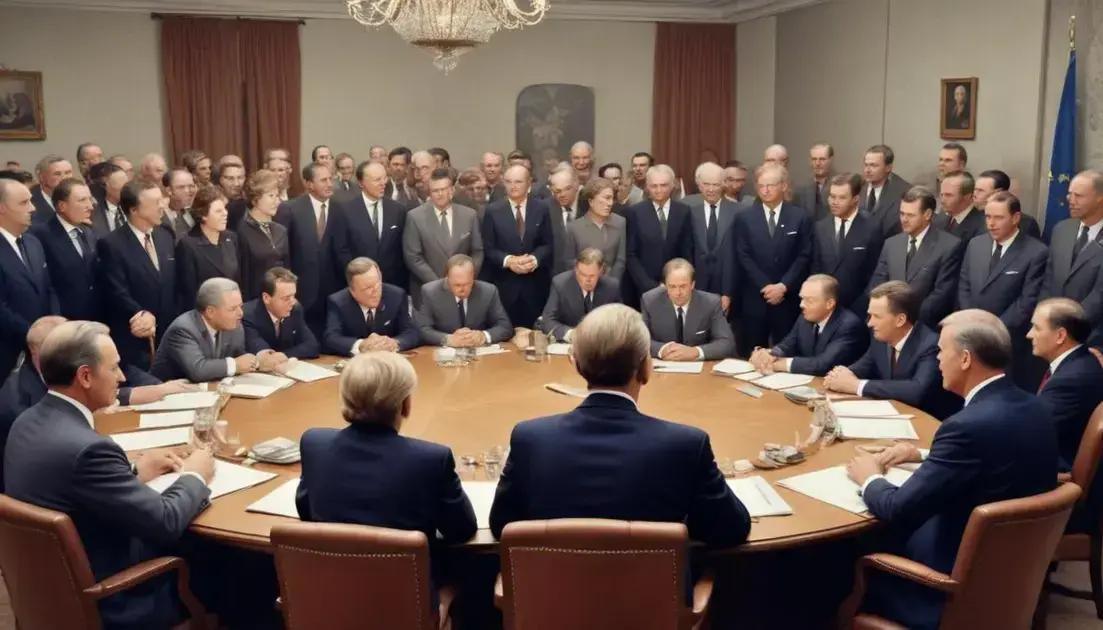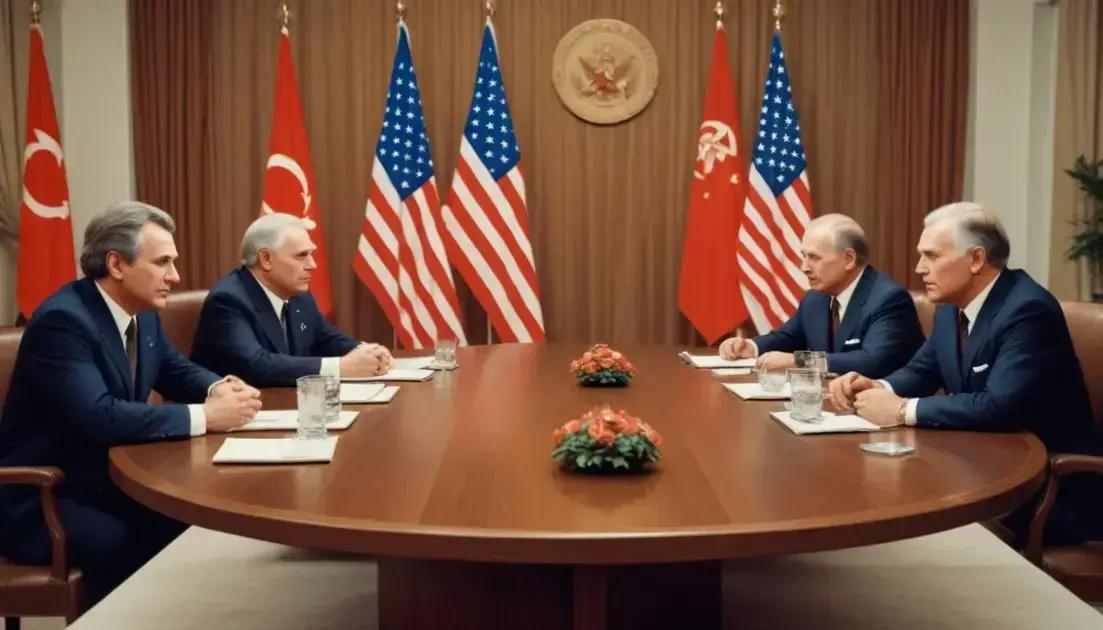
Cuban Revolution: Against Dictatorship, Toward Socialism
The Cuban Revolution, led by Fidel Castro and Che Guevara, aimed to overthrow the dictatorship of Fulgencio Batista and establish a socialist government in Cuba. It began in the 1950s and succeeded in 1959, resulting in significant social reforms in health care and education. The revolution remains influential today, inspiring social movements worldwide while also raising ongoing concerns about political freedom and human rights in Cuba. Its legacy reflects both transformation and ongoing debate about governance and justice.
Cuban Revolution reshaped the political landscape of Cuba, leading to a fierce struggle for a socialist future. Want to learn more about its key figures and outcomes?
Overview of the Cuban Revolution
The Cuban Revolution began in the 1950s. It was a significant turning point for Cuba. Led by Fidel Castro and Che Guevara, the main goal was to overthrow the dictator Fulgencio Batista. Many Cubans were unhappy with Batista’s government. They faced poverty and oppression. As Castro and Guevara gathered support, they used guerrilla tactics to fight against Batista’s army.
On January 1, 1959, the revolution succeeded. Batista fled to the Dominican Republic. Castro and his forces entered Havana, celebrating a new era. The revolution promised social justice and equality. Changes to land ownership and education were introduced.
However, not everyone supported the revolution. Some feared the loss of their businesses. Others worried about Castro’s ties to the Soviet Union. Despite the concerns, the revolution set the stage for a socialist society. This change impacted Cuba’s economy, politics, and cultural identity.
Key Figures: Fidel Castro and Che Guevara
Fidel Castro was a central figure in the Cuban Revolution. He was born in 1926 in Birán, Cuba. Castro became a lawyer and grew unhappy with Batista’s rule. His charisma and passion drew many followers. He led attacks against Batista’s government, using guerrilla tactics that would become famous.
Che Guevara joined Castro in the fight for Cuba’s freedom. Born in Argentina, he was a doctor with a strong sense of justice. Guevara believed in armed struggle for the oppressed. His dedication and bravery inspired many in the revolution.
These two leaders worked closely together. They shared a vision for Cuba’s future. Both wanted social reform and equality for all. Although they had different backgrounds, their goals aligned.
After the revolution, both leaders took key roles in the new government. Castro became Prime Minister, while Guevara focused on economic reforms. Their partnership was crucial to the revolution’s success, shaping Cuba’s political landscape.
The Role of Batista
Fulgencio Batista was the dictator of Cuba before the Cuban Revolution. His rule began in 1933 and lasted until 1959. Batista was wealthy and connected to the U.S. He relied on American support to maintain his power. Many people in Cuba saw him as corrupt and unfair.
Under Batista, Cuba experienced deep social and economic problems. The rich got richer while the poor suffered. Many Cubans faced poverty, lack of healthcare, and limited education. Batista’s government used violence and repression to silence any opposition.
Despite his control, dissent grew. Young leaders like Fidel Castro rose up against Batista. Guerrilla warfare became a common strategy used by rebels. They aimed to replace his corrupt regime and fight for a better future.
When Batista fled on January 1, 1959, it marked the end of his rule. His departure allowed Castro and Guevara to seize control. Batista’s legacy serves as a reminder of the struggle for justice in Cuba.
Impact of the Revolution
The Cuban Revolution had a huge impact on Cuba and the world. After Batista’s fall, Castro’s government made many changes. They focused on land reform, health care, and education. The aim was to improve life for ordinary Cubans.
Castro’s policies transformed Cuba into a socialist state. This brought both support and criticism. Many praised the new access to education and healthcare. Others criticized the loss of personal freedoms. The government controlled the media and suppressed dissent.
The revolution also changed international relations. Cuba aligned with the Soviet Union, causing tensions with the United States. This led to events like the Bay of Pigs invasion in 1961. Many in the U.S. viewed Cuba as a threat during the Cold War.
The effects of the revolution still resonate today. Cuba’s focus on education and health is often admired. Yet, discussions about political freedom and human rights continue. The revolution shaped Cuba’s identity and influenced movements in other countries.
Legacy and Continuing Influence
The Cuban Revolution left a lasting legacy that continues today. It inspired various movements around the world. Many see it as a symbol of anti-imperialism and independence. Leaders in other countries often looked to Cuba as a model for their struggles.
Health care and education in Cuba gained worldwide recognition. The government prioritized these sectors, making them accessible to all citizens. Even today, Cuba boasts high literacy rates and basic healthcare for all. This focus on social welfare is a big part of its identity.
However, political freedom remains a point of contention. Critics argue that the revolution stifled democracy and dissent. Activists continue to push for human rights and greater freedoms. The ongoing debate about Cuba’s political system influences global conversations on governance.
Moreover, the relationship between Cuba and the United States has evolved. Diplomatic discussions and policy changes have occurred since the revolution. These changes reflect broader trends in global politics, especially during the post-Cold War era.
Conclusion
In conclusion, the Cuban Revolution has played a vital role in shaping Cuba’s identity and its effects are still felt today. This movement sought social justice and equality, leaving behind a legacy of reforms in health care and education. While many admire these advancements, there are ongoing discussions about political freedom and human rights in Cuba.
The revolution also inspired other nations to pursue their own paths to independence. Its global influence highlights the power of grassroots movements in seeking change. As we reflect on the legacy of the Cuban Revolution, it’s clear that its story continues to impact conversations about justice and reform worldwide.


